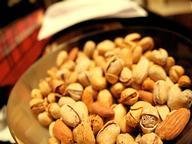Quiz Answer Key and Fun Facts
1. Which of these two species of Chestnut are edible for humans?
2. The English county of Kent has a type of hazelnut, which it is closely associated with, what is that nut called?
3. Almonds have a variety of uses, which is of the following is NOT a use for Almonds?
4. Brazil nuts have a number of properties associated with them. Which of the following is NOT true?
5. Are walnuts a native tree species in the UK?
6. From which country did Macadamia nuts originate?
7. Which country is the world's biggest producer of Pistachio nuts?
8. Are Beechnuts edible?
9. What are peanuts actually?
10. Which brand of European chocolate had an advert claiming it had a hazelnut in every bite?
Source: Author
mcsurfie
This quiz was reviewed by FunTrivia editor
WesleyCrusher before going online.
Any errors found in FunTrivia content are routinely corrected through our feedback system.

